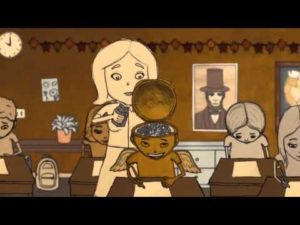Expressionism is an art movement that seeks to express emotional experience through painting and other art forms. It originally started in Germany at the beginning of the 20th century and was mainly focused around poetry and painting, but eventually expanded. It’s characteristics are to distort and stylistically capture a subjective outlook on the outside world to evoke emotion on its viewers. This movement allowed each artist to have their own unique way to capture their emotions and emotional outlook of the world and of themselves. Some argue that the movement started
Even though Van Gogh is a part of the post-impressionism movement he is known for being the biggest influence of the 20th century expressionism movement. His use of color, texture, and composition were what drew plenty of artist into furthering their experimentation with art which would feed this movement in its early stages. Artist such as Edvard Munch, Chaim Soutine, and Léon Spilliaert. When you look at these artist work along with Van Gogh’s it is clear to see his influence on them without question.
Edvard Munch, the scream
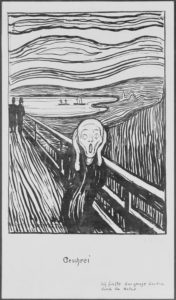
From this lithograph of the famous painting you are able to see it’s very stylistic lines and even down to the over dramatic expression on the subject matter you can tell that the artist, though inspired by real life, wasn’t seeking to recreate the real life prospective of this see. They seeked to reflect the madness or fear that the subject was feeling. This similar line style has been at the fortune of some of Van highs most noted artworks such as the starry night.
Vincent Van Gogh, Wheat Field with Cypresses
Here you can see the expressive lines that Edvard Munch found influence from. They make the scenery more whimsical and adds a layer of emotion to it that the artist purposefully wanted he viewer to see.
Chaim soutine, Portrait of Madeleine Castaing
This painting uses its color pallet to bring out the personality of the subject and emotion of the piece rather than its line use or a combination of the two unlike Edvard Munch’s the scream. The deep blue give you a somber feeling while the burnt orange calms you. The color scheme brings balance to the emotions of the piece and adds to the facial expression of the subject. This similar use of color can be seen in Van Gogh’s “bedroom”.
Léon spiliaert, Self-Portrait
This painting also plays with the use of color. But instead of using complementary color scheme it relays mainly on the use of monochromatic colors. With hints of pure whites, pure blacks, and slight yellowing oranges. It also uses isolation of the subject and its facial expression to get across the emotion of the piece. It combines almost all of Van Goghs painting techniques minus the stylistic line work. This color scheme can be seen in plenty of Van Gogh’s work.
Vincent Van Gogh, La Berceuse (Woman Rocking a Cradle; Augustine-Alix Pellicot Roulin, 1851–1930)
In this piece Van Gogh uses a complementary color pallet and the use of facial expression to get across the emotion in this portrait. His piece can be used as an example of the influence and had on chaim soutine and léon spiliaert. As previously stated léon and Chaim both use their subjects facial expression, or lack there of, to convey emotion. While léon use a different color palate Chaim follows this same color scheme just with different complementary colors.
While all of these artist stem from different country’s and the works dates from 1895-1929 it is clear that Vincent Van Gogh’s influence touched all of these Expressionist painters. Through color, style, and even a little in subject matter.

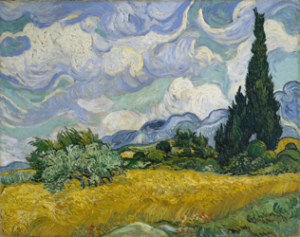

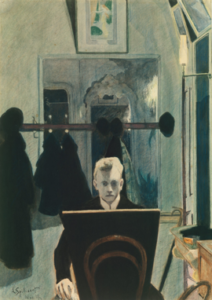

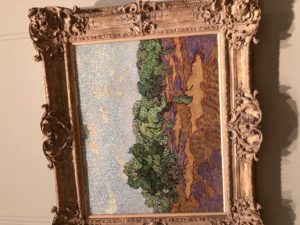 Olive trees, Vincent Van Gogh, 1889
Olive trees, Vincent Van Gogh, 1889 Sunflowers, Vincent van Gogh, 1887
Sunflowers, Vincent van Gogh, 1887 Roses, Vincent Van Gogh, 1890
Roses, Vincent Van Gogh, 1890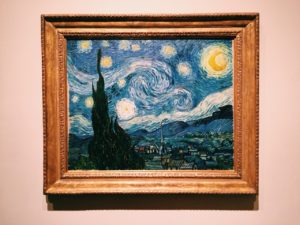
 oleanders, Vincent Van Gogh, 1888
oleanders, Vincent Van Gogh, 1888
